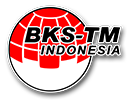Eksperimen Rumah Pengering Ikan Sarden Model Ultra Violet (UV) Solar Dryer Kombinasi dengan Sistem Solar Air Heater Melalui Variasi Kecepatan Udara Keluar
Abstract
The technique for preserving a new product is by using a drying technique. The development and utilization of solar energy must continue to be developed with several technologies including the Solar Air Heater. The research method used was an experimental method on Ultra-Violet solar dryer drying houses for drying sardines with additional absorption of solar radiation heat using a solar air heater system. This configuration works by drawing air from the building envelope or from the outside environment and passing it through a collector where the air is warmed by conduction and convection in the absorber. The analysis of this study is regarding the velocity of the airflow coming out of the drying chamber, namely 1.0 m/s, 1.5 m/s and 1.8 m/s, while the airflow velocity in the solar panel (exhaust fan) is 3.5 m/s (constant). The results of the study show that the addition of heat through the solar air heater panel can speed up the drying process in the drying chamber. The temperature difference in the solar panel increases the heat absorbed through the hot air flow which also increases the efficiency of the solar panel. The highest efficiency of the drying house is 48.05 % occurring at the outlet air flow rate of 1.8 m/s. The temperature difference in the drying chamber and the increased ambient air tends to increase the efficiency of the drying chamber where in this study the highest value of 48.05% was obtained at a speed of 1.8 m/s
Downloads
References
[2]. Abdullah, K. (2003). Fish drying using solar energy. Lectures and Workshop Exercises on Drying of Agricultural and Marine Products: Regional Workshops on Drying Technology, Jakarta, 159–191.
[3]. Djamalu, Y. (2016). Analisa Perpindahan Panas Keadaan Tunak Pada Pengering Jagung Tipe Rumah Kaca Variasi Lubang Ventilasi Dan Rak Alumunium. Jurnal Energi Dan Manufaktur, 9(1), 23–28.
[4]. DJAMALU, Y. (2016). Peningkatan kualitas ikan asin dengan proses pengeringan efek rumah kaca variasi hybrid. Jurnal Technopreneur (JTech), 4(1), 6–18.
[5]. Geankoplis, C. J. (2003). Transport Processes and Separation. In Process Principles. Prentice Hall NJ.
[6]. Holman, J. P. (1997). Perpindahan kalor edisi ke enam, alih bahasa, Ir. E. Jasfi M. Sc. Lemigas Erlangga.
[7]. Imbir, E., Onibala, H., & Pongoh, J. (2015). Studi pengeringan ikan layang (Decapterus sp) asin dengan penggunaan alat pengering surya. Media Teknologi Hasil Perikanan, 3(1).
[8]. Khanlari, A., Sözen, A., Şirin, C., Tuncer, A. D., & Gungor, A. (2020). Performance enhancement of a greenhouse dryer: Analysis of a cost-effective alternative solar air heater. Journal of Cleaner Production, 251, 119672.
[9]. LESTARI, Y. (2019). Perbandingan Kerja Alat Pengeringan Tipe Spray Dryer dan Freeze Dryer dalam Proses Pengeringan Bahan Berbentuk Cair. Jurnal Ilmiah Kohesi, 3(3).
[10]. Mustaqimah, M., Nurba, D., Agustina, R., & Yasar, M. (2020). Introduksi Ghe.Vent Dryer Pada Proses Pengeringan Ikan Di Pantai Lhok Seudu. Jurnal Ekonomi Dan Pembangunan, 11(1), 60–68. https://doi.org/10.22373/jep.v11i1.71
[11]. Nofrianto, N. (2018). Efisiensi Alat Pengering Ikan Dengan Konsep Konveksi Paksa Udara Blower. Universitas Islam Riau.
[12]. Riansyah, A., Supriadi, A., & Nopianti, R. (2013). Pengaruh perbedaan suhu dan waktu pengeringan terhadap karakteristik ikan asin sepat siam (Trichogaster pectoralis) dengan menggunakan oven. Jurnal Fishtech, 2(1), 53–68.
[13]. Runesi, R. Y., Koehuan, V. A., & Nurhayati, N. (2020). Studi Eksperimental Skala Laboratorium Rumah Pengering Kopi Menggunakan Plastik Ultra Violet (UV Solar Dryer) Dengan Mekanisme Konveksi Paksa. LONTAR Jurnal Teknik Mesin Undana (LJTMU), 7(02), 28–37.
[14]. Sharma, K., & Wadhawan, N. (2018). Effect of Natural and Forced Convection Solar Dryers in Retention of Proximate Nutrients in Tomato. International Journal of Current Microbiology and Applied Sciences, 7(07), 1175–1186. https://doi.org/10.20546/ijcmas.2018.707.142
[15]. Sidhi, S. D. P., Pujianto, A., Muhfizar, M., & Prasetyo, D. (2017). Studi Eksperimen untuk Kondisi Tanpa Beban pada Pengering Ikan Tipe Greenhouse Aktif. Jurnal Airaha, 6(2), 43–47.
[16]. Winarno, F. G. (1993). Pangan: Gizi, Teknologi dan Konsumen. Gramedia Pustaka Utama.
[17]. Yuliasdini, N. A., Putri, S. U., Makaminan, T. A., & Yuliati, S. (2020). Efisiensi Termal Alat Pengering Tipe Tray Dryer Untuk Pengeringan Silika Gel Berbasis Ampas Tebu. Prosiding Seminar Mahasiswa Teknik Kimia, 1(1), 29–33.
[18]. Yuniarti, T., Lestari, S. D., Perceka, M. L., Handoko, Y. P., Purnamasari, H. B., Kristianto, S., Tarigan, N., Ridhowati, S., Afifah, R. A., & Prayudi, A. (2021). Pengetahuan Bahan Baku Perikanan. Yayasan Kita Menulis.
[19]. Zamharir, Z., Sukmawaty, S., & Priyati, A. (2016). Analisis Pemanfaatan Energi Panas pada Pengeringan Bawang Merah (Allium ascalonicum L.) dengan menggunakan Alat Pengering Efek Rumah Kaca (ERK): Analysis of Heat Energy Utilizationin Onion (Allium ascalonicum, L.) DryingusingGreenHouses Gasses (GHG) Drye. Jurnal Ilmiah Rekayasa Pertanian Dan Biosistem, 4(2), 264–274

This work is licensed under a Creative Commons Attribution-NonCommercial-NoDerivatives 4.0 International License.

 Rolandi Punuf(1)
Rolandi Punuf(1)



